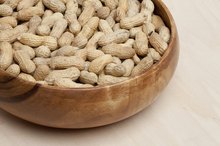Does Niacinamide Cause Flushing?
Niacinamide, also known as vitamin B-3, is a water-soluble vitamin necessary for metabolism and maintenance of healthy skin and nerve cells. Niacinamide supplements are often used to treat vitamin B-3 deficiency and a related wasting disease called pellagra. It can be used to treat high cholesterol and skin conditions. Niacinamide supplements can cause skin flushing. Consult your doctor before taking over-the-counter niacinamide supplements to treat any condition.
Niacinamide and Flushing
Niacinamide supplements can cause flushing of your face and trunk when you begin treatment or increase dose, according to MayoClinic.com. Flushing is a warm, tingling or itchy feeling which often accompanied by reddening of the skin, rapid heartbeat, shortness of breath, dizziness and sweating. Niacinamide causes flushing by dilating blood vessels on the surface of the skin.
Niacinamide Flush Treatment
Can Beta Carotene Change Your Skin Color?
Learn More
Niacinamide flushing is usually harmless, but causes great discomfort which can lead to discontinuation of the drug. You can reduce flushing by taking aspirin or non-steroidal anti-inflammatory drugs 30 minutes before the niacinamide. Using an antihistamine 15 minutes before taking niacinamide also helps reduce flushing, according to MayoClinic.com. Consult your doctor about using using slow-release niacinamide supplements. Time-released niacinamide supplements cause less flushing than regular supplements.
Niacinamide Administration
Niacinamide supplements are available alone or in combination with other vitamins. Take niacinamide tablets with food to reduce stomach irritation. Do not take large doses of vitamins while you are taking niacinamide unless your doctor tells you so. If you have high blood pressure or diabetes, consult your doctor before you take niacinamide. Niacinamide can worsen these conditions. Common side effects of niacinamide include headache, dizziness, diarrhea, nausea and stomach upset, according to Drugs.com.
Natural Sources of Niacin
How to Take Yohimbe Before a Meal
Learn More
The daily recommendations for niacinamide are 16 mg for males and 14 mg for females, according to MayoClinic.com. Natural sources of niacinamide can enable you to meet niacinamide daily dietary requirements. Foods rich in niacinamide include beef liver, brewer's yeast, milk, eggs, fish, salmon, swordfish, tuna, meat, cereal grains, sunflower seeds, peanuts, green leafy vegetables, fortified breads and breakfast cereals, according to MedlinePlus.
Related Articles
Writer Bio
Destiny Simmons has worked as a professional health writer since 2005. She specializes in health and nutrition articles. Her work has appeared in various health Web sites. Destiny holds a Bachelors of Science in nursing from Boston University and a Master of Public Health Nutrition from Tufts University.









